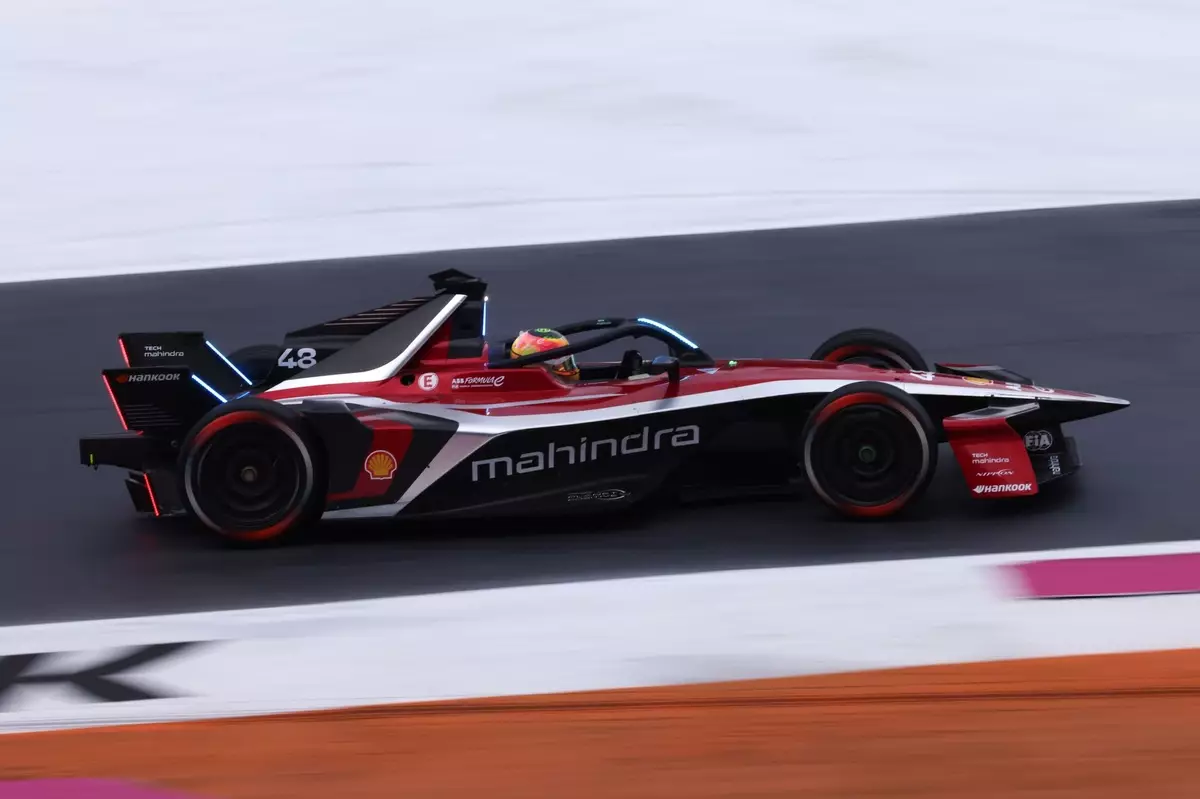Mahindra Racing has been a cornerstone in the all-electric racing series, Formula E, since it was launched in 2014. Their long-standing participation represents not only a commitment to innovation but also a significant investment in the future of motorsport, particularly as the industry moves toward sustainable technologies. With five race victories and a commendable third-place finish in the 2015-16 teams’ championship, Mahindra has consistently demonstrated its competitiveness on the track. However, as the sport evolves and prepares for the highly anticipated Gen4 regulations set to roll out in the 2026-27 season, the Indian manufacturer finds itself at a pivotal crossroads.
Mahindra’s team principal, Fred Bertrand, asserts that the organization remains fully committed to participating in Formula E, although important decisions regarding its future remain pending. Currently, the crux of the issue lies in deciding whether to continue its journey as a full-fledged manufacturer or shift to a customer team operation. This ambiguity appears to stem from a desire to make a sound strategic choice that balances both the financial and operational aspects of competing in a rapidly changing environment.
Despite missing the FIA’s deadline for manufacturers on December 31 for the Gen4, discussions between the body governing the rules and Mahindra continue to take shape. Bertrand’s commentary indicates that, owing to Mahindra’s foundational role in Formula E, the FIA is still considering Mahindra’s potential entry under the new regulations. The ongoing debates represent a willingness to explore options, but they also highlight the inherent uncertainty affecting Mahindra’s strategic considerations.
The competitive landscape in Formula E has intensified as other manufacturers—such as Nissan, Jaguar, Porsche, Maserati, and Lola—have all publicly cemented their commitment to the Gen4 regulations. Their investment in the future signals a fierce race for market relevance in electric vehicle technology, further pressuring Mahindra to clarify its intentions. Bertrand emphasizes the importance of staying as a manufacturer, as it positions Mahindra at the forefront of technological advancements and brand visibility within the championship’s growing audience.
However, the stakes are not merely about winning titles; they encompass broader implications for the manufacturer’s brand in the global motorsport arena. As more competitors align with Gen4, Mahindra risks being sidelined if it cannot effectively navigate these pivotal choices. Yet, Bertrand underscores an optimistic viewpoint—there’s still time to innovate, develop, and finalize decision-making for future participation.
One significant aspect influencing Mahindra’s decision-making is the regulatory environment established by the FIA. Bertrand describes an adaptable approach, where new entries could be accommodated even post-deadline, reflecting the governing body’s willingness to adapt to market dynamics. He argues that a firm deadline should not block innovative entrants into the fray, provided they are ready and meet regulations.
This understanding has broadened the discourse about inclusivity within the series. Especially as automotive giants like Hyundai explore the potential of entering amid their commitments in other racing series, a ripple effect is becoming increasingly evident. Bertrand’s remarks suggest that even if established manufacturers have committed, the door remains open for newcomers, potentially diluting competition and shedding light on the evolving landscape of the electric motorsport industry.
The Road Ahead
Mahindra’s uncertain future in Formula E oscillates between opportunities and challenges. The team’s historical participation affirms its significance, yet the evolving nature of the race and its regulatory frameworks adds layers of complexity. As Bertrand asserts, the dialogue with the FIA remains constructive, allowing Mahindra to weigh its options before making objective decisions.
Going forward, Mahindra must carefully evaluate its strategic path, deciding whether to engage with the Gen4 regulations as a manufacturer or adapt to a different role. Regardless of the choice, the commitment to electric racing must harmonize with the overarching need for sustainability and technological advancement in the automotive industry. Hence, the coming months will be crucial as Mahindra seeks to align its ambitions with the realities of modern motorsport.

